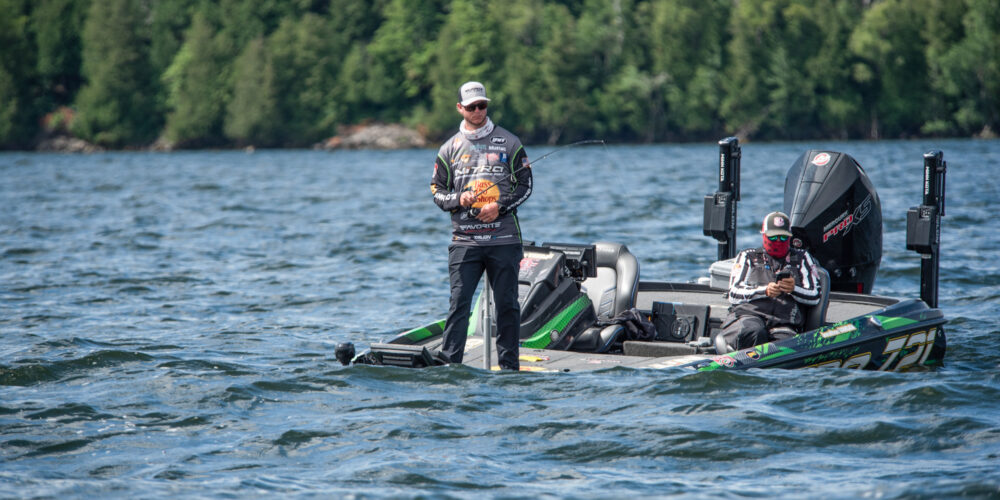Follow Jonathon VanDam’s Advice on Navigating Big Water

Driving a bass boat in big waves is a significant part of fishing on the Great Lakes. MLF’s trailering policy during the recent Covercraft Stage Five Presented by Abu Garcia on Sturgeon Bay provided the field with some relief from long, rough runs, but the wind and waves are always a factor in how and where anglers can fish on bodies of water like Lake Michigan.
Michigan native Jonathan VanDam has spent his entire life surrounded by big water and has a wealth of experience navigating waves while in search of smallmouth bass.
The two biggest keys for him when taking a bass boat on these massive lakes are putting a heavy emphasis on safety and preparing his boat well before he even launches.
Preparing Your Boat
VanDam and other experienced Great Lake big-water anglers often take several extra steps to get their boats ready for big waves.
“One of the main things is making sure your boat is ready and can handle big water,” VanDam says. “You have to make sure it’s rigged properly, or you could get yourself into trouble. Bass boats are not made for the Great Lakes. I don’t care what anyone says, a 20-foot boat is not ideal out there.”
To make sure his Nitro is up for the task, VanDam selects sturdy mounts for his electronics and takes extra steps to ensure everything on the boat is secured.
“Nothing on my boat is screwed in – everything is bolted in with big washers,” he says. “I also double-nut my engine with two big bolts to lock everything in place.”

Safety and Extra Equipment
VanDam also takes extra steps to make sure his boat has everything on board that he may need.
“Safety is the biggest thing. I bring an extra bilge pump, flares and a ship to shore radio to make sure I’m ready for anything,” VanDam says. “I also pay close attention to the weather forecast so I can make smart choices. I watch NOAA weather, and the Great Lakes have real-time wave and weather data from buoys.”
Navigating Waves
After your boat is prepared and you have all the safety equipment on board, it’s time to drive. VanDam’s advice is to take it easy.
“You don’t need to be in a hurry,” he says. “That can be hard in a tournament situation, but you have to go slow. Don’t get crazy, because spearing one wave can lead to a lot of trouble if you start taking waves over the bow.”
To keep his bow high while driving, VanDam prefers a prop that will keep his bow lifted. This will vary based on an angler’s boat, but it an essential piece of big water driving.
Another thing that comes with experience is learning how to read the waves properly. Bass anglers also tend to exaggerate the size of waves as if they were telling their buddy how big their bass was after a fishing trip.
“Two-foot waves are small enough that you can drive on top of them, the 3- and 4-footers are where you have to be more cautious,” VanDam says. “Those 5 and bigger are when you have to be very careful. You have to learn to watch all of the waves that are coming while you’re driving. A lot of times, I’m looking to the side as well to see what the waves are going to do.”
How VanDam drives through waves depends on the direction. One thing he’s learned over time is that just keeping your bow high and going slow when you’re driving into big waves is functional, but zig-zagging through big waves is safer and easier on your boat.
“You can quarter them and it makes it much easier on you and your equipment,” he confirmed. “Again, the biggest thing is just being smart and taking your time.”